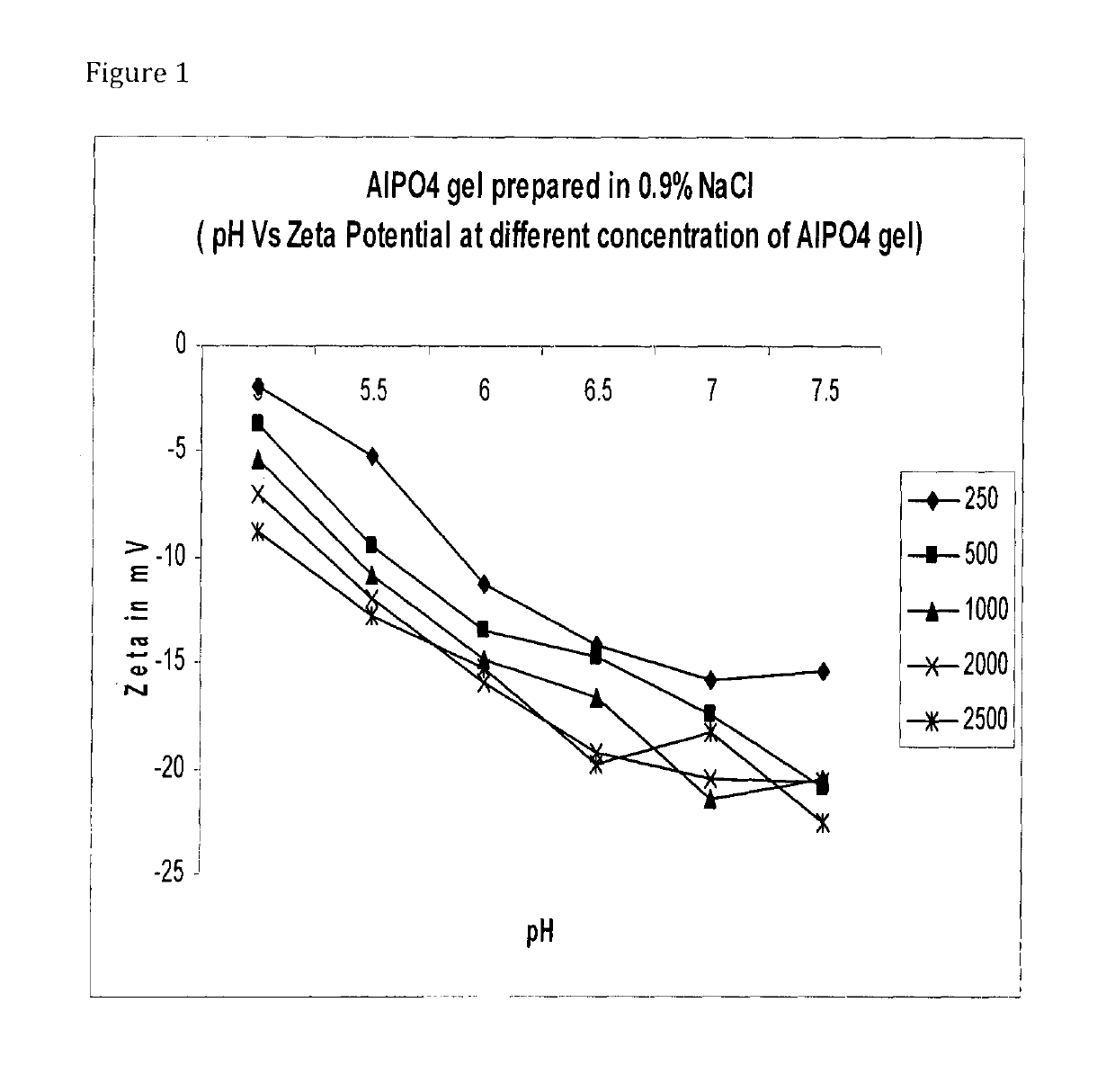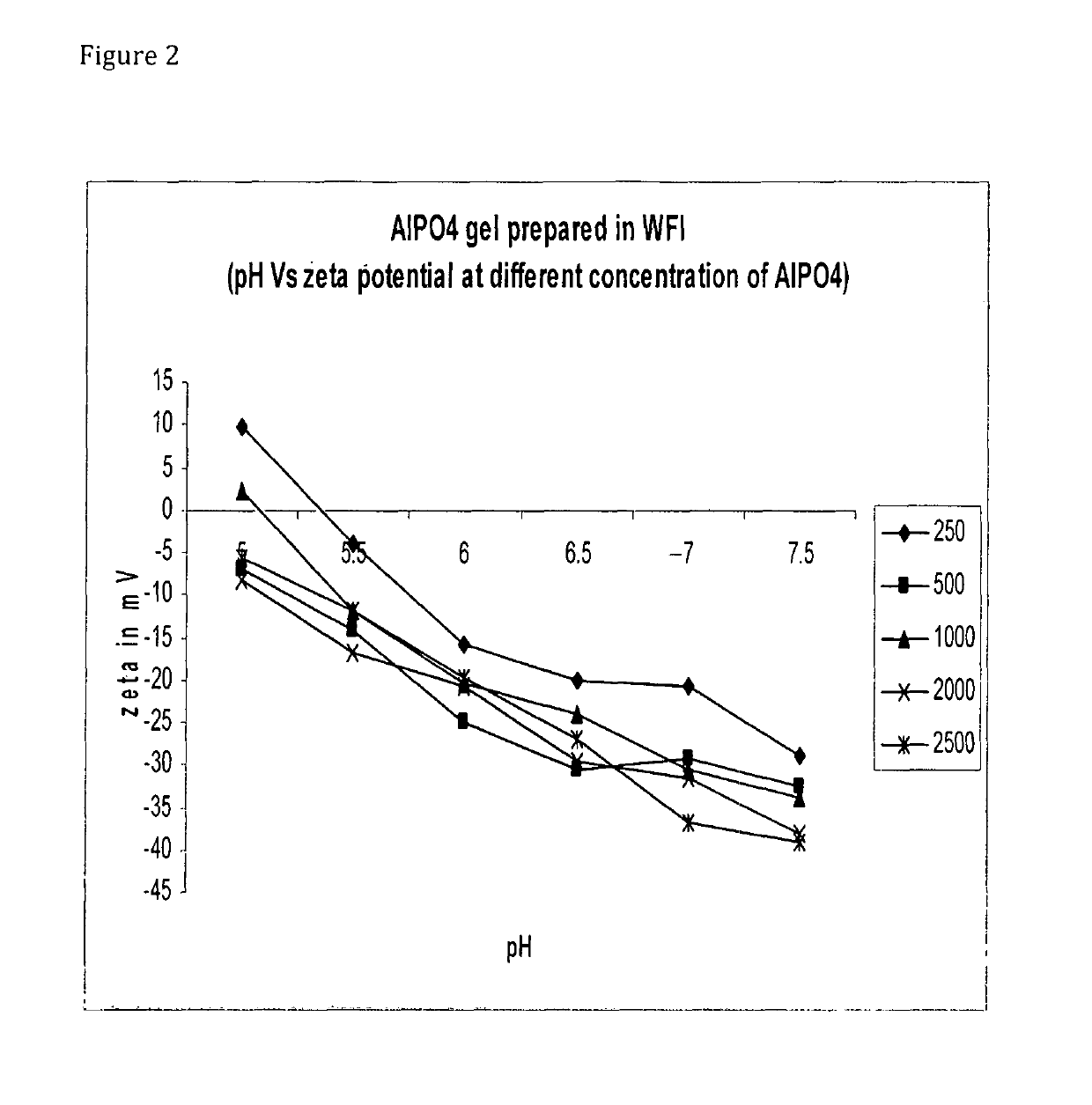Methods for enterovirus inactivation, adjuvant adsorption and dose reduced vaccine compositions obtained thereof
a technology of enterovirus and vaccine composition, applied in the field of enterovirus inactivation, adjuvant adsorption and dose reduction vaccine composition obtained thereof, can solve the problems of vaccine associated paralytic poliomyelitis, re-seeding the world with polioviruses, and limitations of post-eradication era of opv
- Summary
- Abstract
- Description
- Claims
- Application Information
AI Technical Summary
Problems solved by technology
Method used
Image
Examples
example 1
[0043]Purification of Sabin IPV (sIPV)
[0044]1) Tangential Flow Filtration (TFF):[0045]Clarified harvest pool was concentrated to 10× using tangential flow filtration system with 100 Kda cassettes (0.5 m2) and then diafiltered 3 times of harvest volume with phosphate buffer (40 mM, pH: 7.0)
[0046]2) Column Chromatography:[0047]The purification was done by Ion Exchange Chromatography (IEC). 10×TFF concentrate was passed through DEAE Sepharose fast flow (Weak-Anion exchanger) packed in column xk-26 using Akta explorer (GE Healthcare). Negatively charged impurities was found to bind to the column whereas polio virus was collected in flow through with phosphate buffer 40 mM.
[0048]3) TRIS Buffer Exchange:[0049]To minimize the loss of antigen in a quite cumbersome inactivation procedure (13 days), purified virus pool was buffer exchanged from phosphate buffer to TRIS buffer (40 mM, pH: 7) with TFF system (100 KDa, 0.1 m2). The purified virus pool was exchanged with three volumes of tris buf...
example 2
[0050]A) Inactivation of sIPV[0051]10× concentrated M-199 with 0.5% glycine was added so as to achieve final concentration 1×. Inactivation agent formalin (0.025%) was added into purified virus bulk while constant mixing. Inactivation was carried out at 37° C. while continuous stirring for 13 days containing 0.22 u filtration on 7th day and 13th day.
[0052]B) Inactivation of sIPV in TRIS Buffer and Phosphate Buffer
[0053]0.025% formaldehyde was used for inactivation for 13 days at 37° C.
[0054]
TABLE 1D-Antigen Content, Formalin inactivation inpresence of TRIS buffer and Phosphate bufferD-Antigen content (40 mMD-Antigen content (40 mMPhosphate buffer duringTris buffer duringInactivation)Inactivation)Type 152.70 DU / ml408.19 DU / mlType 222.63180.20Type 34.2121.50
[0055]When formaldehyde inactivation methods were particularly carried out in presence of phosphate buffer, significant D-antigen losses were observed for Sabin Type I. Whereas it was found that formaldehyde inactivation in presenc...
example 3
[0090]Adsorption of sIPV:[0091]1. Autoclaved 1% stock of Al(OH)3 and AlPO4 was used for the preparation of formulations.[0092]2. Desired volume of Al(OH)3 / AlPO4 was taken to get the required concentration of alum in a 100 ml glass bottle.[0093]3. Inactivated polio virus bulk with known D-Ag Unit was added and volume make up was done with diluent.[0094]4. Final formulation pH was adjusted to 6.5 with 1 N HCl / NaOH.[0095]5. The formulation bulk was kept on magnetic stirrer overnight at 2-8° C.
PUM
| Property | Measurement | Unit |
|---|---|---|
| concentration | aaaaa | aaaaa |
| concentration | aaaaa | aaaaa |
| concentration | aaaaa | aaaaa |
Abstract
Description
Claims
Application Information
 Login to View More
Login to View More - R&D
- Intellectual Property
- Life Sciences
- Materials
- Tech Scout
- Unparalleled Data Quality
- Higher Quality Content
- 60% Fewer Hallucinations
Browse by: Latest US Patents, China's latest patents, Technical Efficacy Thesaurus, Application Domain, Technology Topic, Popular Technical Reports.
© 2025 PatSnap. All rights reserved.Legal|Privacy policy|Modern Slavery Act Transparency Statement|Sitemap|About US| Contact US: help@patsnap.com



